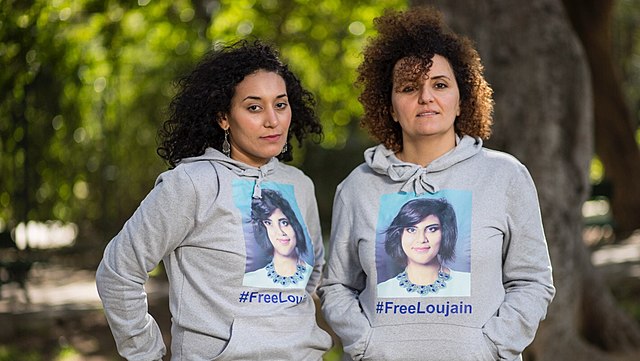by Sam Hamad
While some hailed “progress” last year with Mohammed bin Salman’s decision to allow women in Saudi Arabia to drive, the status quo today indicates that this long-campaigned for “reform” has barely scratched the surface in one of the world’s most anti-women states.
It remains, after all, a place where women’s basic rights are entirely curtailed by the Wali and Namus practices, collectively known as the “male guardianship” system.
These judicial and cultural systems of patriarchal oppression mean that for women, everyday activities such as traveling, receiving hospital treatment, taking up employment or even opening a bank account, can only be carried out with the consent and supervision of their male guardian.
The lifting of the driving ban in September by royal decree was however, a very rare victory for activism over the state, and in particular, a victory for female-led activism. The story behind the lifting of the ban is one of sheer heroism that dates back decades, but a new campaign erupted in 2011, called Women2Drive.
This campaign obviously centered on women driving, with prominent activists such as Loujain al-Hathloul using direct action tactics, like filming herself driving and flouting the ban. Her YouTube videos got over a million views.
But it was also attached to a wider campaign against Saudi Arabia’s totalitarian system of male guardianship and the Kingdom’s general disdain for basic human rights.
In the past, the Saudi regime would’ve immediately reacted to a movement like this with brutality, but they were unprepared for the campaign to spread like wildfire through social media.
And although social media doesn’t always equate to “real world” activity, the domestic popularity and global attention the activists received on twitter gave the Saudi regime reason to believe pure intransigence in such a situation could lead to an escalation.
But, as ever, the backlash that so often accompanies change soon followed.
Immediately following the announcement of the lifting of the ban, the core activists, including several of the most prominent women’s rights activists such al-Hathloul, who participated in Women2Drive and the anti-guardianship campaign, were arrested by the regime.
The charge against them is the dubiously vague “suspicion of harming Saudi interests,” as well as additional absurd charges of “spying.”
They remain in prison until this very day, and the fourth hearing of their case was today indefinitely postponed for “personal reasons” not made public by the judge.
Without getting into the complex machinations of the tyrannical Saudi judicial system, postponements such as this are a means to indefinitely detain people without conviction, or any kind of due process.
Some of the women have been taken to “secret detention facilities” where they have been subjected to torture techniques such as waterboarding and electrocution, as well as sexual abuse. The official said to be overseeing their torture is Saud al-Qahtani, who is a close confidant of Crown Prince Mohammed bin Salman and who also oversaw the brutal torture and murder of Saudi journalist, Jamal Khashoggi.
In addition to this, smear campaigns have been launched against the women, with al-Houthloul’s brother explaining to the BBC his sister fears she will be harmed if she’s ever released.
And this gets to the heart of the matter: Though MbS is on record as opposing women driving, he wants the world to believe – especially his “liberal” friends in high places – that the women’s victory was down to him; the great “reformist” and his widely touted “reform agenda.” MbS, as he portrays himself, is a trailblazer determined to drag Saudi Arabia kicking and screaming into the twenty-first century.
But the only kicking and screaming being done is from the genuine reformers who MbS has locked away in Saudi dungeons, and who he is seeking to erase from history.
MbS’ “reform agenda” has been accompanied by what Human Rights Watch called a “frenzy of fear for genuine Saudi reformers,” adding that the only reason the women are locked up appears to be “wanting women to drive before [MbS] did.”
This isn’t the only reason, but it’s an important component of the true motivations behind MbS “reform agenda,” which is to co-opt and curtail genuine reform to serve his own tyrannical agenda of increasing his own power, security and wealth, and that of his super-elite regional and global allies.
MbS sees these crumbs of “reform” as a tool to placate the West, while women’s most basic civil rights continue to be violated.
The true crime of the women who campaigned to lift the driving ban was to attack the system as a whole – the very system from which MbS gets his power and his wealth.
Some had dared to hope that global nature of this case, as well as MbS’ bungling of the murder of Khashoggi, might have provided enough momentum to aid the fate of women in Saudi Arabia.
But there is no real reason to suspect leniency from the regime. In the past month, 14 more reformers, including activists campaigning in support of the women, have also been arrested.
It seems MbS’ “frenzy of fear” will only get worse, as this false prophet of reform clashes with those who challenge the very foundations of his and his family’s tyrannical dynasty.
Sam Hamad is an independent Scottish-Egyptian activist and writer. Reprinted, with permission, from The New Arab.






Naïve report. Weak analysis. Saudi Arabia is a tribal monarchy legitimized by royal birth and an alliance with fundamental Islamist elements. Neither Islam nor tribalism includes democracy or social equality as core elements of society or political ideology. the author makes the common mistake of imposing his or “other” standards on Saudi Arabia. Sadly this article contributed little to our understanding of what is going there.
These ‘Reforms’ are so superficial like the ornaments on the ‘handle of the dagger’. The function of the dagger would remain the same!